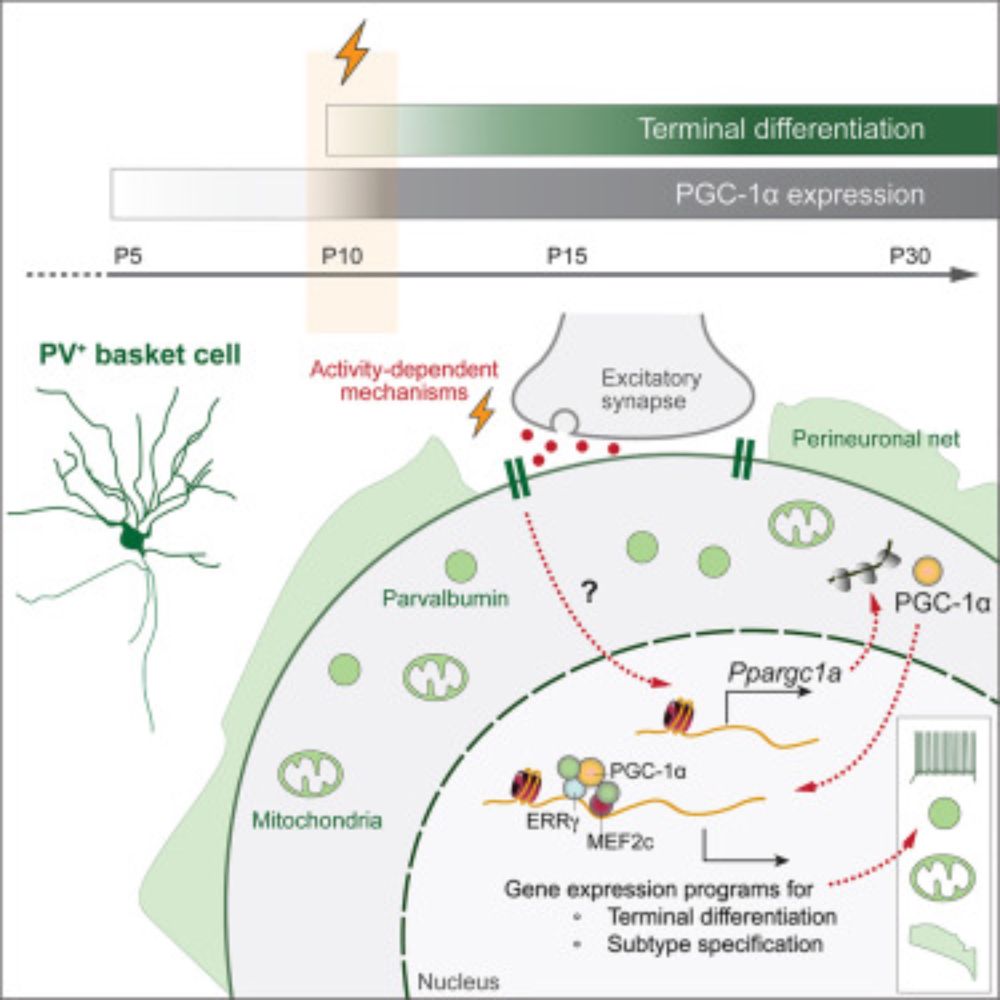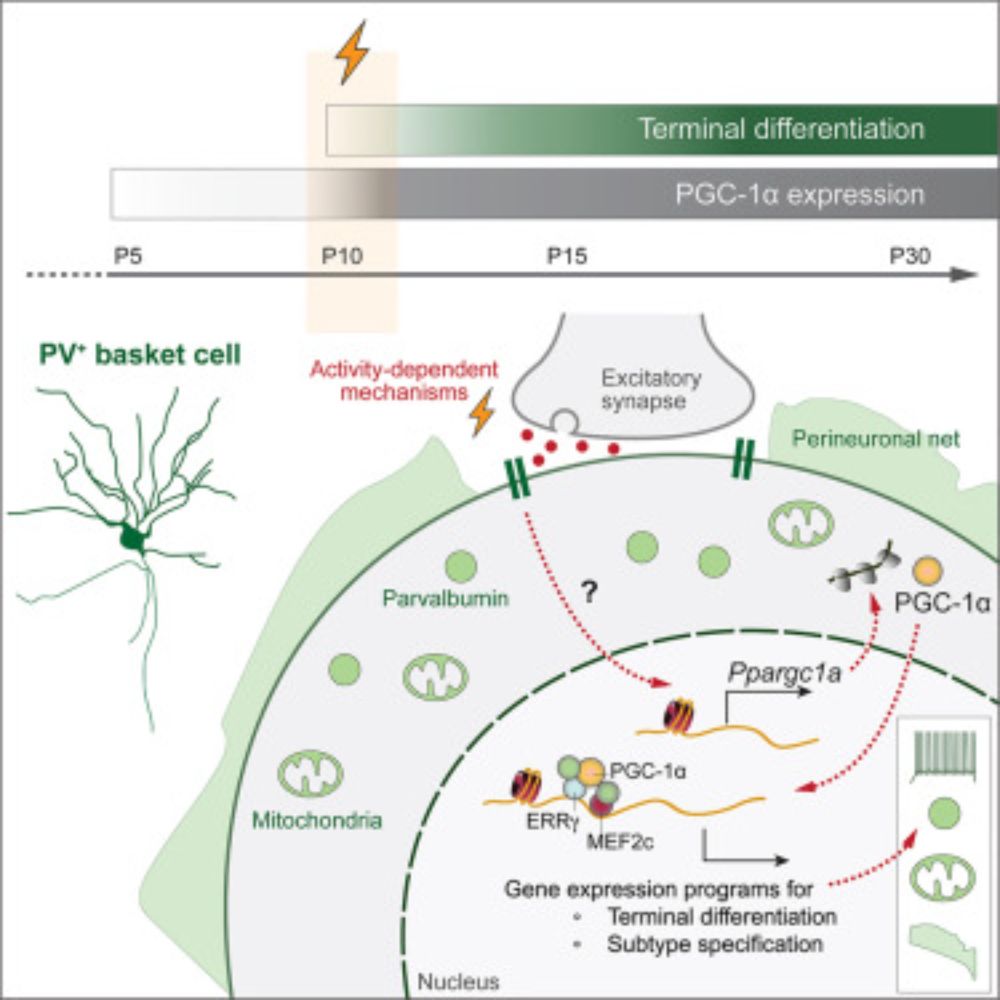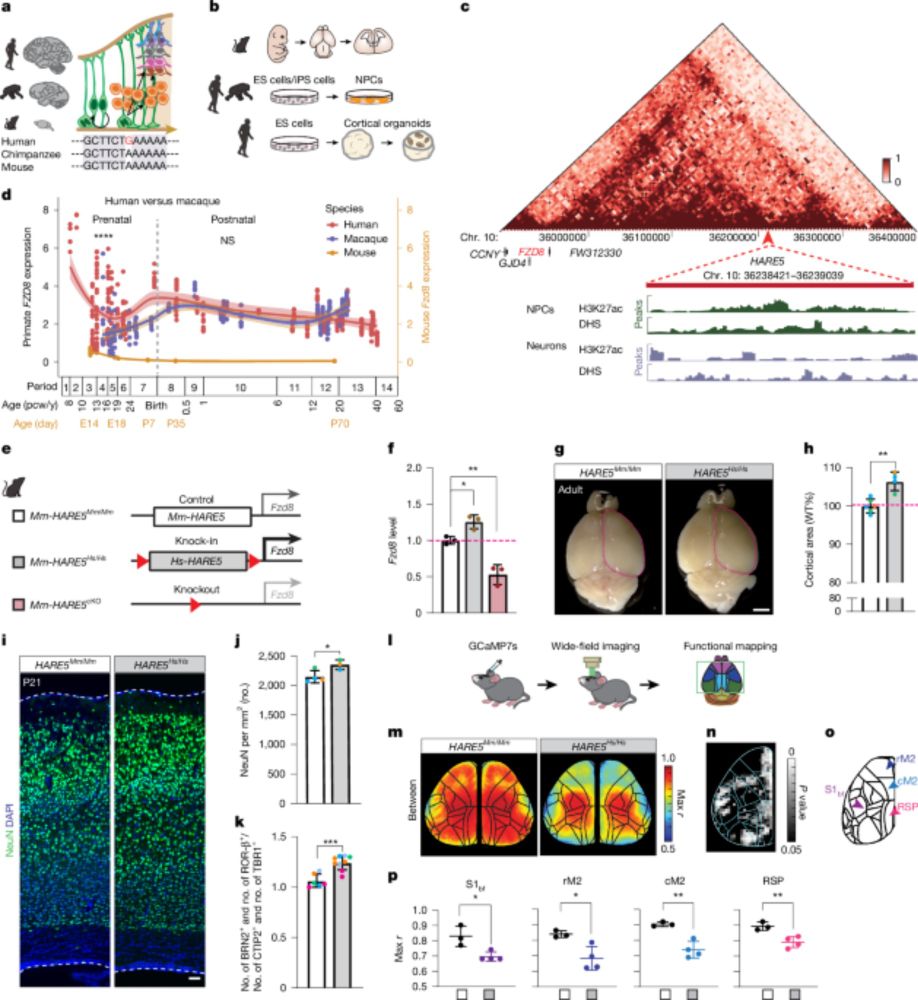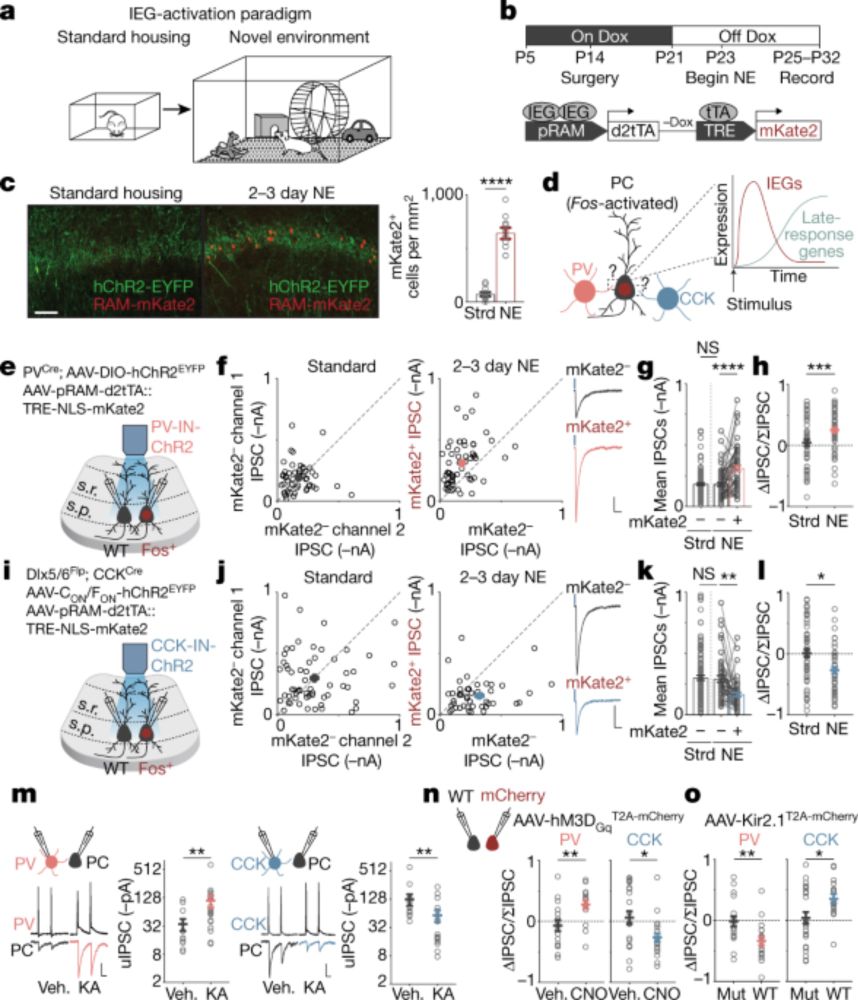She is! Thanks for the fantastic comic -- it will go on the wall to make company for the one of your paper (and Clems' paper)
16.07.2025 09:52 — 👍 2 🔁 0 💬 1 📌 0
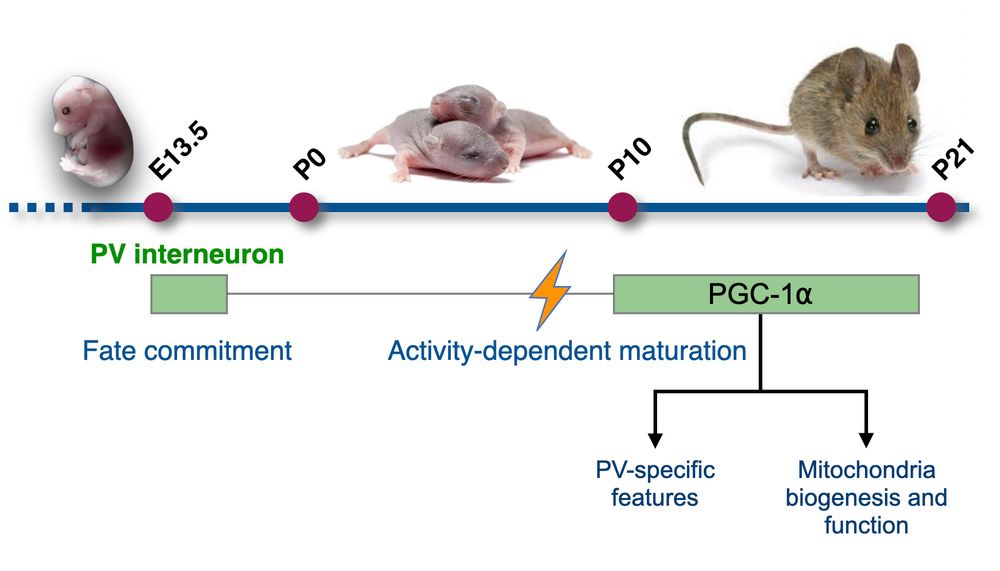
9/10 In sum, our findings reveal a postnatal molecular switch that drives the activity-dependent maturation of parvalbumin interneurons, a critical population for cortical function. Funded by the @wellcometrust.bsky.social
16.07.2025 07:59 — 👍 1 🔁 0 💬 1 📌 0

8/10 Importantly, this mechanism also allows PV interneurons to regulate their mitochondrial content and function, which may also contribute to their maturation
16.07.2025 07:59 — 👍 0 🔁 0 💬 1 📌 0

7/10 PGC-1alpha cooperates with ERR-gamma to directly regulate the transcription of many PV-enriched genes. Incidentally, it also seems involved in repressing genes that are typically enriched in other cells, like SST interneurons
16.07.2025 07:59 — 👍 0 🔁 0 💬 1 📌 0

6/10 How is this achieved? We discovered that PGC-1alpha regulates the expression of most genes that are typically enriched in mature PV interneurons
16.07.2025 07:59 — 👍 0 🔁 0 💬 1 📌 0
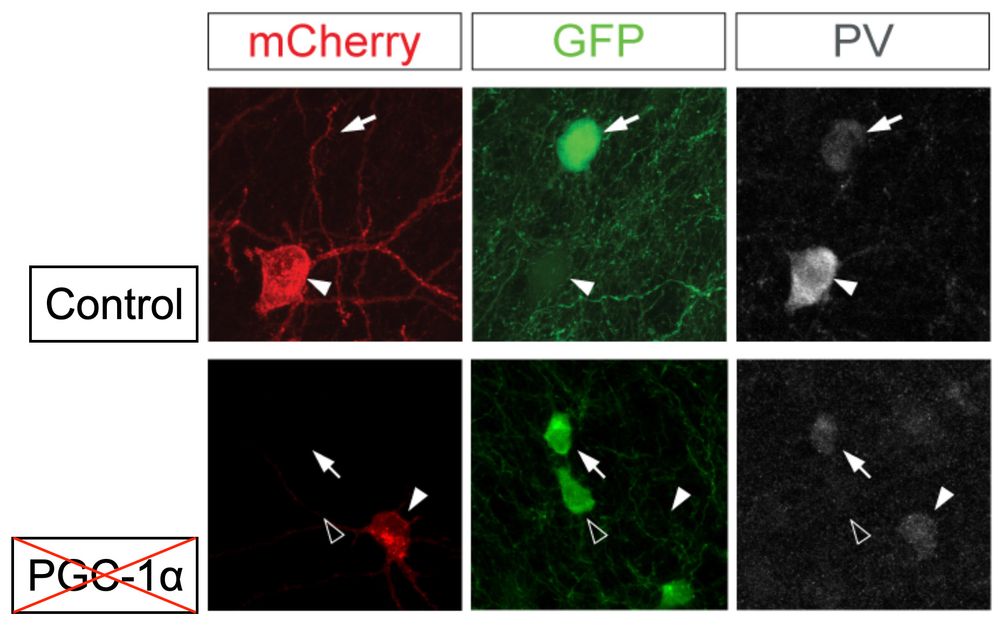
5/10 What are the mechanisms regulating the protracted maturation of cortical interneurons? We found that this process requires neuronal activity and is mediated by the transcriptional modulator PGC-1alpha
16.07.2025 07:59 — 👍 0 🔁 0 💬 1 📌 0
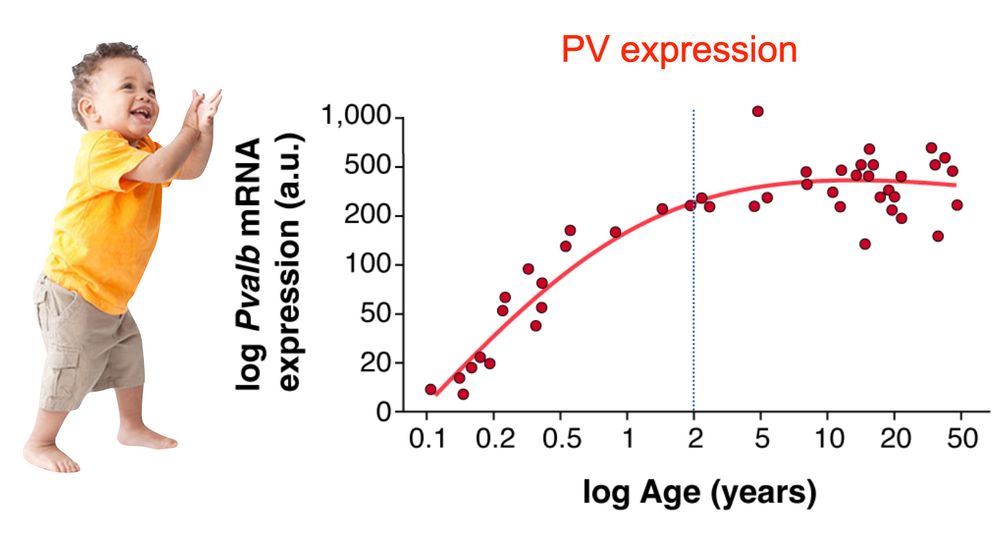
4/10 Interestingly, while PV interneurons are generated in the embryo, they are late bloomers: in humans, for example, it takes more than two years for PV interneurons to acquire their mature properties
16.07.2025 07:59 — 👍 0 🔁 0 💬 1 📌 0
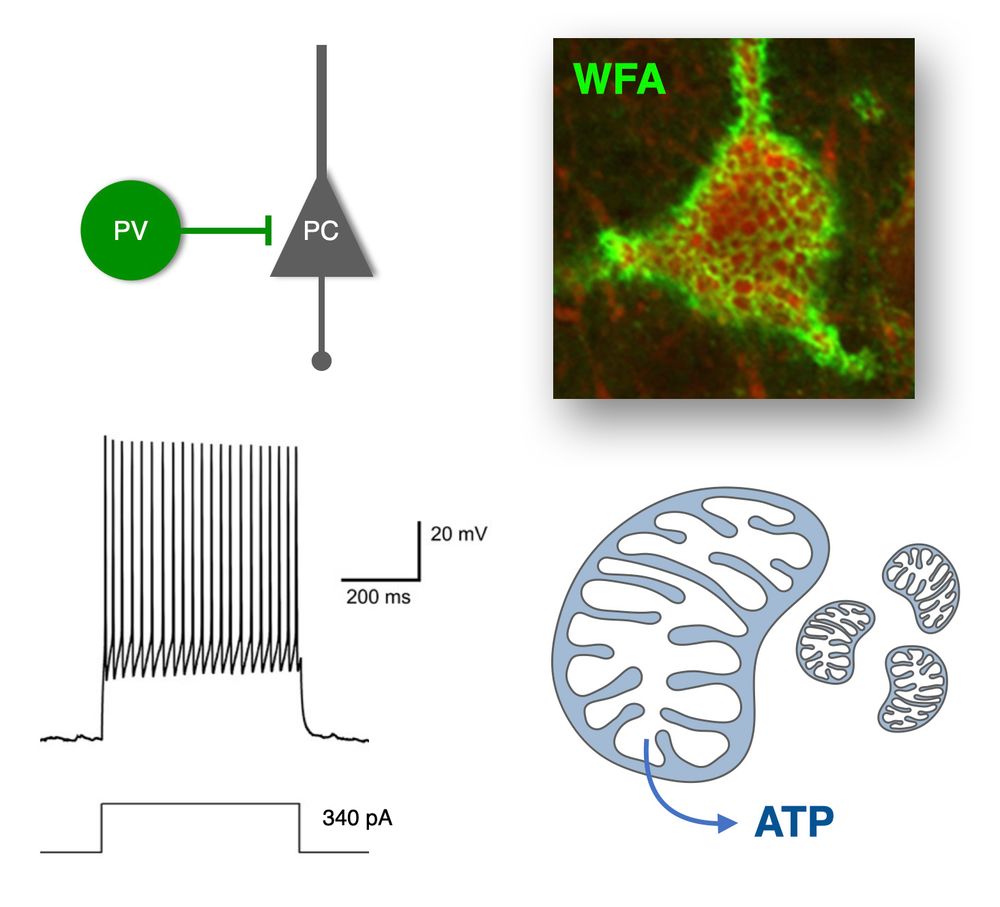
3/10 Several unique properties distinguish PV interneurons: They exert a very tight control over the output of pyramidal cells; are fast-spiking, meaning they can fire action potentials at very high frequencies; are covered by perineuronal nets, and have many mitochondria
16.07.2025 07:59 — 👍 1 🔁 0 💬 1 📌 0

2/10 PV interneurons are a type of inhibitory neuron in the cortex, characterized by their expression of the calcium-binding protein parvalbumin. These neurons play a crucial role in regulating neuronal activity and are involved in #memory, sensory processing, and motor control
16.07.2025 07:59 — 👍 1 🔁 0 💬 1 📌 0
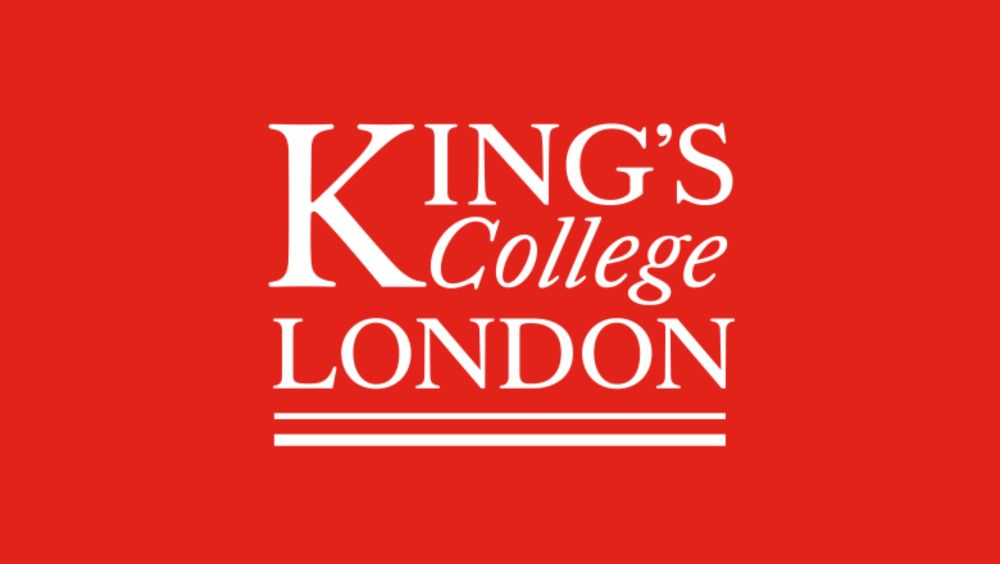
Senior Executive Assistant
We're #hiring for a new role as Senior #ExecutiveAssistant to our fantastic Director and Managing Director! Deadline 23 June
@marinlab.bsky.social
www.kcl.ac.uk/jobs/116505-...
04.06.2025 12:38 — 👍 1 🔁 1 💬 0 📌 0
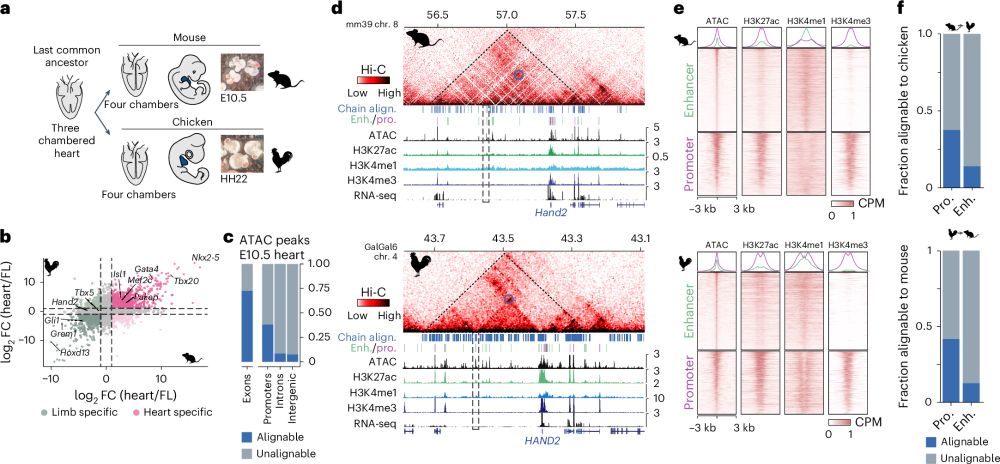
Conservation of regulatory elements with highly diverged sequences across large evolutionary distances
Nature Genetics - Combining functional genomic data from mouse and chicken with a synteny-based strategy identifies positionally conserved cis-regulatory elements in the absence of direct sequence...
How to find Evolutionary Conserved Enhancers in 2025? 🐣-🐭
Check out our paper - fresh off the press!!!
We find widespread functional conservation of enhancers in absence of sequence homology
Including: a bioinformatic tool to map sequence-diverged enhancers!
rdcu.be/enVDN
github.com/tobiaszehnde...
27.05.2025 12:19 — 👍 246 🔁 111 💬 7 📌 9
Still openings, check it out!
28.05.2025 05:02 — 👍 15 🔁 22 💬 1 📌 0
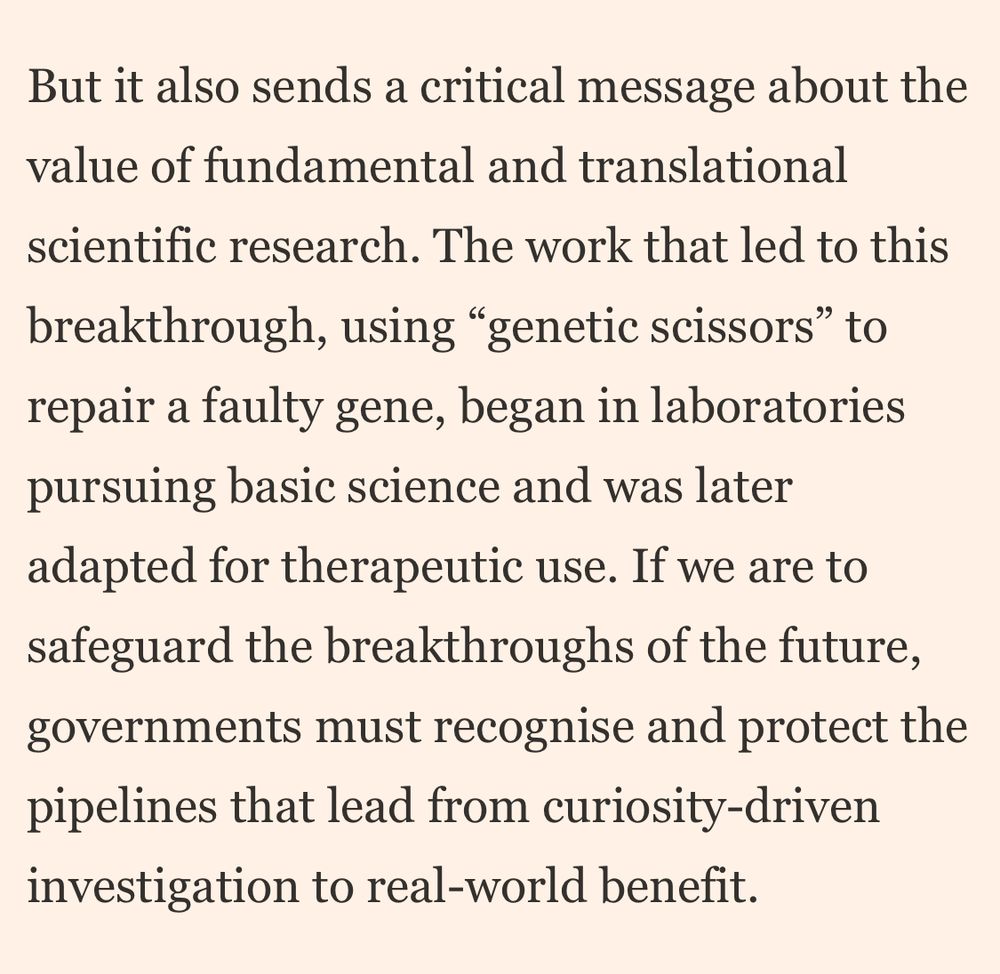
But it also sends a critical message about the value of fundamental and translational
scientific research. The work that led to this breakthrough, using "genetic scissors" to repair a faulty gene, began in laboratories pursuing basic science and was later adapted for therapeutic use. If we are to safeguard the breakthroughs of the future, governments must recognise and protect the pipelines that lead from curiosity-driven investigation to real-world benefit.
On the value of investing in curiosity driven research - which in this case contributed to the personalised gene therapy for a rare disease
on.ft.com/45rXI50 @anjahuja.bsky.social
28.05.2025 06:24 — 👍 55 🔁 15 💬 2 📌 2
🎙️[49] ENTENDER EL CEREBRO PARA REGULARLO
👨🔬 con #OscarMarínParra
@MarinLab
Alteraciones durante el desarrollo de nuestro🧠 pueden ser la causa de desordenes psiquiátricos como #autismo, #epilepsia, #bipolaridad o #esquizofrenia
#Neurociencias
(1/3)
11.05.2025 11:33 — 👍 2 🔁 1 💬 1 📌 0
Yeah, don’t forget the inferior colliculus
20.05.2025 19:11 — 👍 1 🔁 0 💬 1 📌 0
Great @nature.com paper on the early stages of human cortical development, led by @qianxuyu.bsky.social from C. Walsh’s lab, in collaboration with @drmingyaoli.bsky.social
A wonderful new resource to probe area & layer specification 🧪🧠🧬
15.05.2025 05:51 — 👍 8 🔁 5 💬 0 📌 0
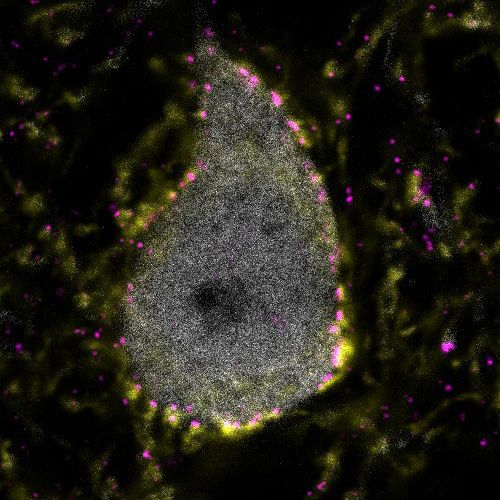
1/10 Our latest research, led by @martijnselten.bsky.social, identifies a mechanism through which Parvalbumin (PV) interneurons regulate their activity in the #cortex. This is the story @nature.com
www.nature.com/articles/s41... ⬇︎ 🧵 @devneuro.bsky.social @kingsioppn.bsky.social @erc.europa.eu
30.04.2025 15:12 — 👍 64 🔁 19 💬 3 📌 2
That’s brilliant — congrats!
07.05.2025 07:42 — 👍 1 🔁 0 💬 1 📌 0
10/10 Here’s the paper @nature.com if you want to dig in www.nature.com/articles/s41... That’s it. Thanks for sharing! @devneuro.bsky.social @mrc-cndd.bsky.social @kingsioppn.bsky.social @kingscollegelondon.bsky.social @erc.europa.eu
30.04.2025 15:12 — 👍 9 🔁 2 💬 0 📌 0
9/10 In sum, our findings identify a previously unknown form of interneuron plasticity and strengthen the idea that neuropeptide signalling plays crucial roles in maintaining neural circuit stability. Funded by the magnificents @erc.europa.eu and Rosetrees Trust
30.04.2025 15:12 — 👍 2 🔁 1 💬 1 📌 0
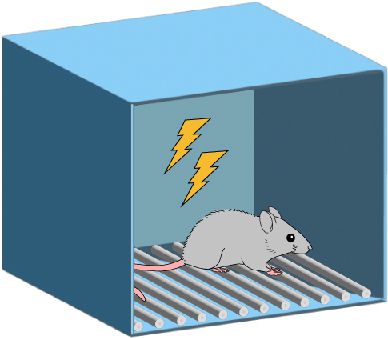
8/10 Importantly, this mechanism also regulates the connectivity of PV interneurons during learning, for example, in a fear-conditioning paradigm
30.04.2025 15:12 — 👍 1 🔁 1 💬 1 📌 0
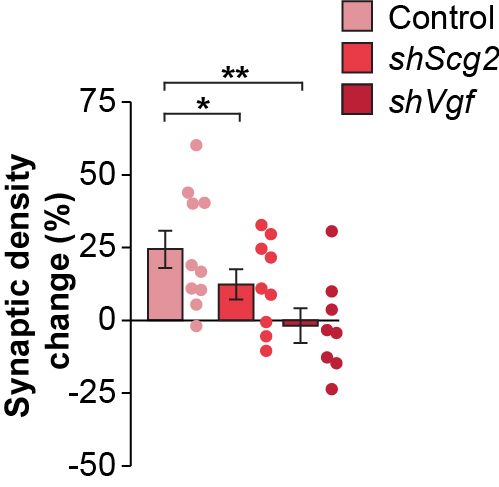
7/10 For PV interneurons, Vgf is the critical gene modulating the plasticity of inhibitory inputs received from other PV interneurons
30.04.2025 15:12 — 👍 2 🔁 1 💬 1 📌 0
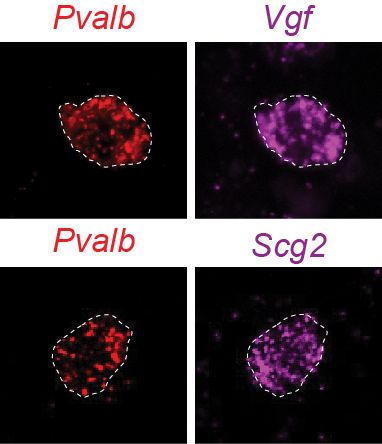
5/10 How is this achieved? We found that PV interneurons induce the expression of two genes encoding multiple neuropeptides, Scg2 and Vgf, in response to increased activity
30.04.2025 15:12 — 👍 1 🔁 1 💬 1 📌 0
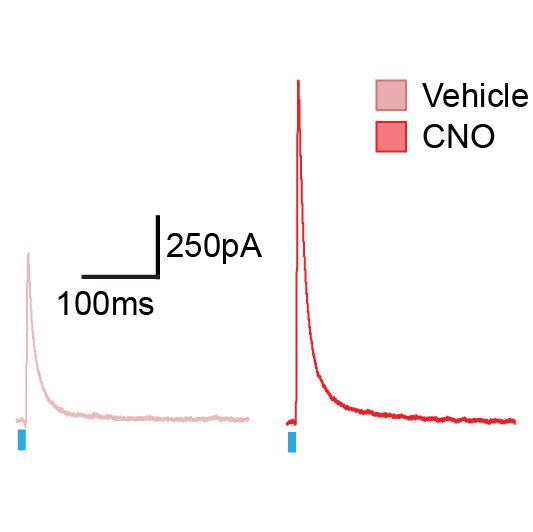
4/10 Using experimental manipulations, we found that PV interneurons scale the inhibition they receive to maintain stability. When the activity of a PV interneuron increases, it “requests” more inhibitory inputs from other PV+ interneurons, effectively rebalancing its activity
30.04.2025 15:12 — 👍 3 🔁 3 💬 1 📌 0
Assistant professor in neuroscience @ Yale studying the neuroscience of immune responses and neuroimmunology.
Also: cerebral cortex, development, brain-body communication, glia, inhibitory neurons, allergies, lung-brain | Lab: favuzzilab.com
Group leader @ University of Edinburgh, neuroscientist interested in how the brain plans, executes and adapts complex motor actions.
Group Leader at Imagine Institute | Inserm | Neurogenomics | Somatic mosaicism | Neurodevelopment | Lineage tracing | Developmental disorders | DRN board member
An innovative university experience for A-level students exploring neuroscience and embracing fresh ideas and experiences across disciplines
👥 Conversaciones cara a cara con científic@s para hablar de ciencia, de la vida, y de lo que surja.
🎙 Podcast de Julián Cerón, científico en el IDIBELL y profesor adjunto de genética en la UB. (www.ceronlab.com)
🎧 https://linktr.ee/raticosdeciencia
neuroscientist interested in natural behaviour & development of the social brain. kinshiplab.org
Global neuroscience association: supporting neuroscience education, research & outreach
IBRO Journals: Neuroscience & IBRO Neuroscience Reports @ibrojournals.bsky.social
Join us in Cape Town for #IBRO2027!
More information: ibro.org
Neurobiologist interested in synaptic communication, neuronal networks, neurodevelopmental disorders, stem cell models and much more | Professor Group leader Radboudumc | http://www.nadifkasri-lab.com/Home.html
Comunidad enfocada al desarrollo pro-activo de la humanidad, fomentando la educación, ciencia y tecnología.
Hacemos sinapsis con millones de usuarios.
Periodista científico y escritor | Jefe de ciencia en http://elDiario.es | Julia en la onda | Mañana más (RNE) | Naukas | Catástrofe Ultravioleta | Fogonazos | Contacto: ✉️ amartinez@eldiario.es
Associate Professor at the Kavli Institute for Systems Neuroscience. #QuattrocoloLab. Mum. Interested in brain development, travelling and Medieval History.
Molecular Psychiatry, Neuroscience, Genetics, Professor at Karolinska Insitutet
Study viruses and cells, and how they can't live without ESCRTs.
Developmental neurobiologist, microglia, neuroimmune and immunovascular interactions, environment.
Group leader at CIRB, Collège de France, CNRS
RDND Lab at King’s College London led by Cristina Dias. Clinical Geneticist and Rare Disease researcher. Rare Conditions, neurodevelopmental disorders of chromatin regulation and chromatin remodeller-TF interactions.
https://tinyurl.com/rdndkcl
Systems neuroscientist / Cortical circuits researcher / Prof in Neuroscience at Yale School of Medicine
https://cardinlab.org/
•interneurons •synapses •optogenetics •memory
Postdoc in Dagliyan lab, Molecular Neurobiology, Biomedicum, Karolinska Institutet @ki.se 🇸🇪
PhD in Neurobiology, Scheiffele lab, Biozentrum, University of Basel @biozentrum.unibas.ch🇨🇭
Neuroscientist at University of Bristol. Cortical circuits, PFC, interneurons, dopamine, brain development.
https://www.anastasiades-lab.org
